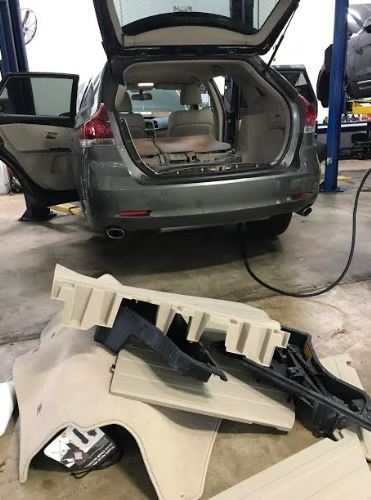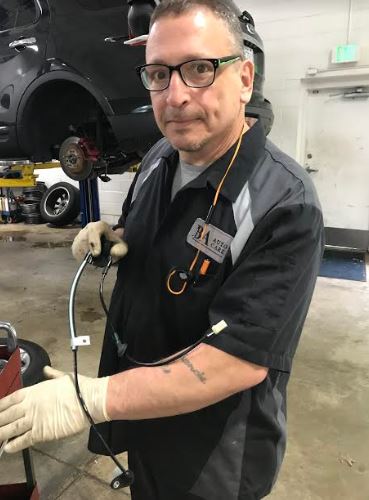One of the hardest things for some of our auto repair customers to understand is why their specific repair or service cost so much. An explanation of the repair may sound simple and straightforward, but the actual work required to accomplish that simple repair can be very complicated. The dilemma is, if we explain something in a way that a layperson can understand, the simple explanation can make a customer think it’s a simple job. Where possible, we like to share with a customer what’s involved in a repair, but that’s not always feasible.
An opportunity arose the other day for me to help one of our customers better understand why the repair we were performing for her was so expensive. I was walking by one of our auto technician’s bay and noticed he had many of the interior panels that make up the cargo carrying area of a vehicle spread out behind the car. I asked him what he was repairing. He shared with me that he was replacing an anti-lock, brake wheel speed sensor. On the particular car model he was working on, the electrical connector was buried under several panels. Many vehicles have the sensor connect near the wheel but not this car.


I took some photos and showed them to the customer. I had a feeling this was one of those repairs where the customer might not understand why it cost so much. The reaction was “Oh that’s why it’s so expensive”!

This situation, where the complex sounds simple, is the primary reason behind the few negative reviews we receive. Not long ago, we received a low rating online, and the customer’s stated reason was that the repair was overly expensive, “$500 for plugs wires and coil replacement!” I looked into the job and could not find any inconsistencies in the pricing, so I went online to do a price check and found that the lowest price for this repair was $424 and the highest was $547. We were right in the middle, and we use manufacturer quality or better parts, plus give a 3-year warranty.
Many services and repairs are hard for customers to understand and hard for us to explain. The complex interplay of dozens of computers and sensors on a vehicle’s Control Area Network (CAN) can be incredibly tough to convey in a short conversation with a person unfamiliar with the topic. Two skilled technicians can have a conversation about this complex system, but a service adviser and a customer — not so much.
So how do we get around this? Well, we have to rely on trust.
It’s just like when I go to the dentist. I trust the dentist we use, listen to his explanations, and just say yes to recommended services.
You’ll need to have this same type of relationship with your auto service facility. Take the time to build a working relationship. Start with small jobs and slowly build upon this until you are comfortable saying yes.






